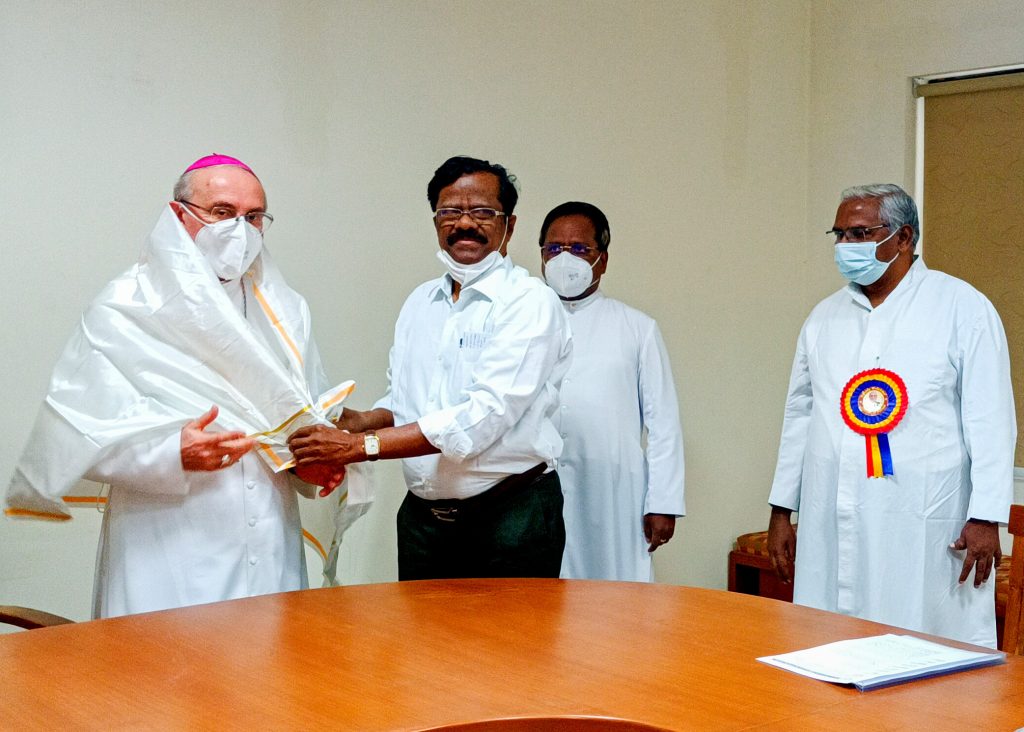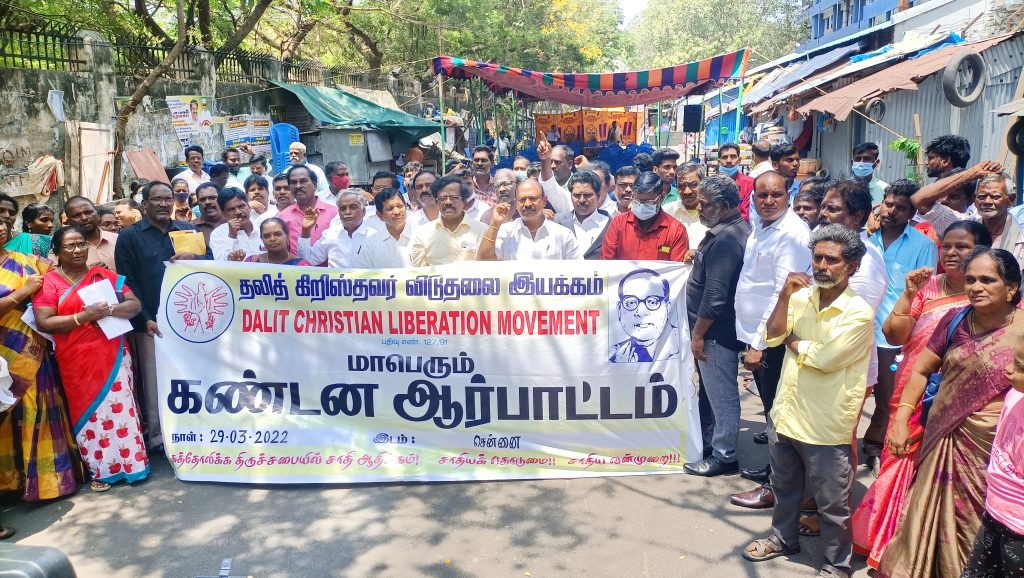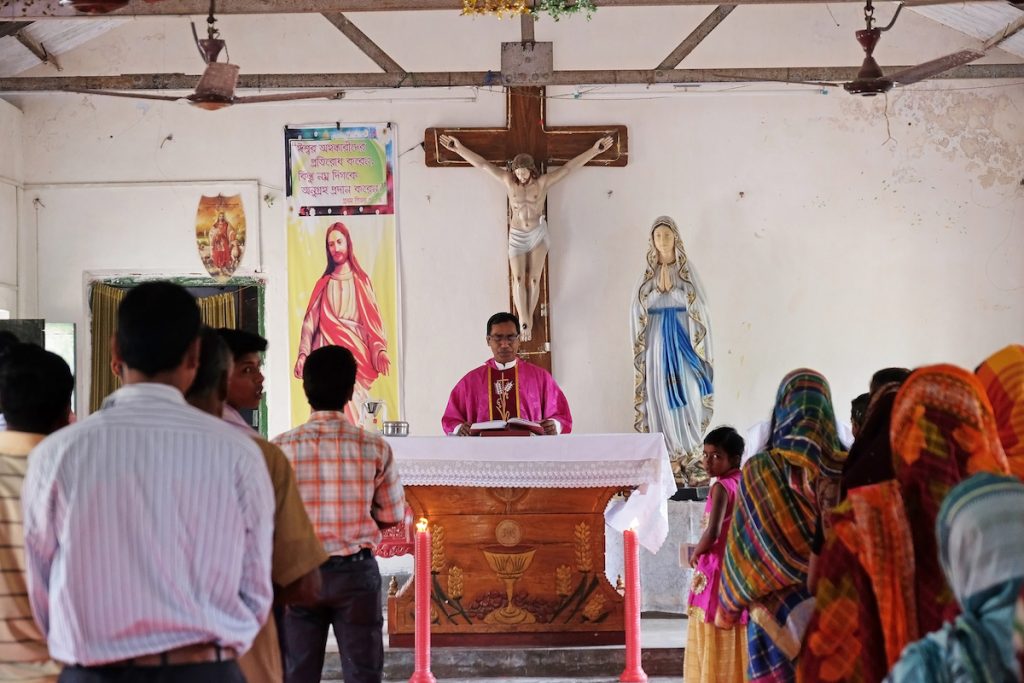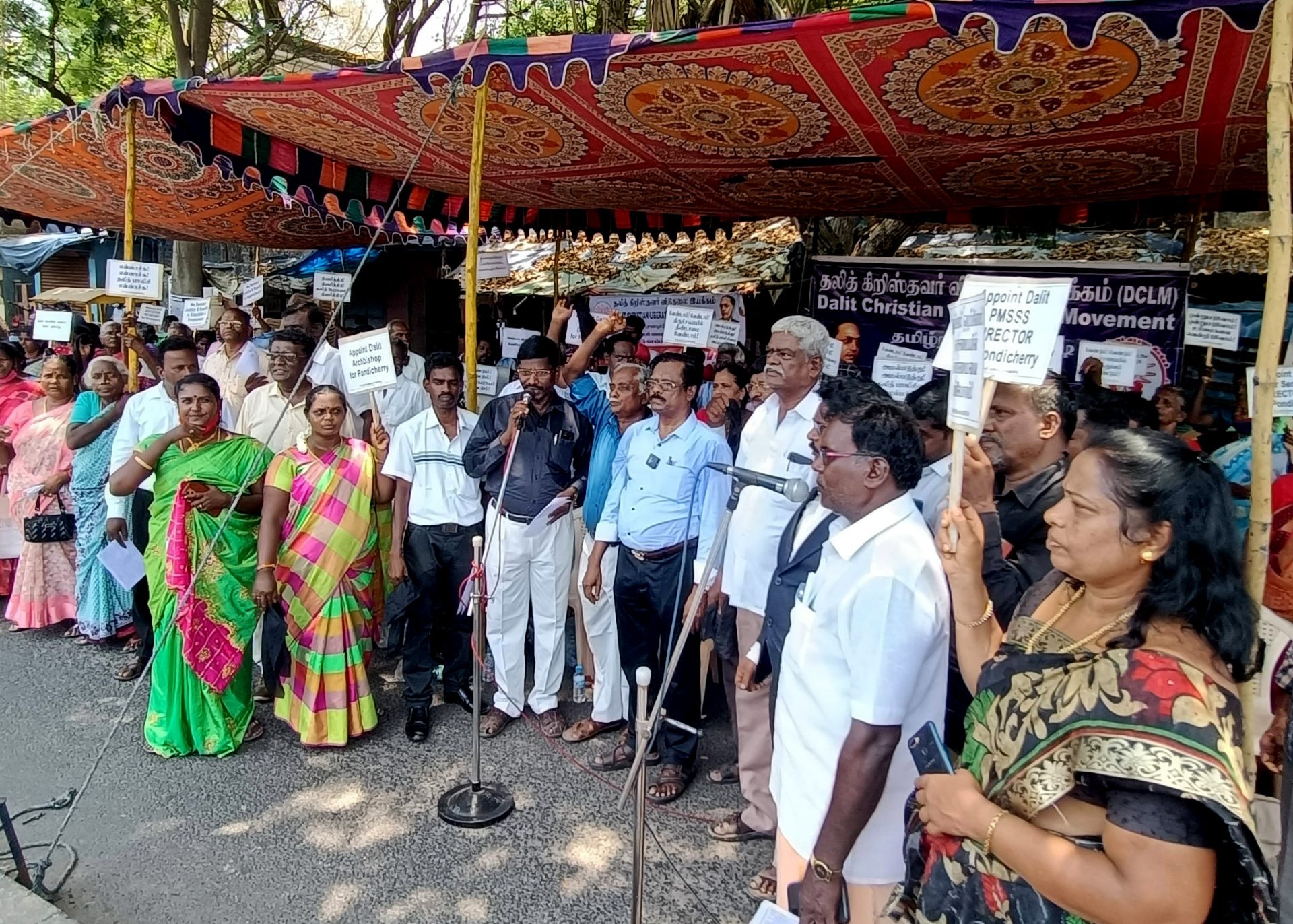On August 27, Pope Francis will create 21 cardinals at a consistory at the Vatican where the first Dalit cardinal from India, Archbishop Anthony Poola of Hyderabad, will be receiving the red hat.
His appointment is seen as a historic gesture by the pope in recognition of the Dalit Christian community, which continues to suffer caste domination and discrimination in the Catholic Church.
Also, a number of the new cardinals are from some of the hitherto excluded or overlooked Christian communities and regions in the world.
The appointment of the first Dalit cardinal comes at a time when Dalit Christians have taken up public protests and struggles during the past three decades against the continuing casteism, caste discrimination, and domination against them in the Catholic Church.
During the past four years, they have been concertedly demanding to appoint Dalit bishops, especially a Dalit archbishop in Pondicherry-Cuddalore archdiocese where it has been deliberately prevented until now by the local hierarchy even though Dalits comprise more than 70 percent of Catholics here.
These recent struggles led by the Dalit Christian Liberation Movement (DCLM) have been widely reported by the news media, including some of the global Catholic media. This gesture of Pope Francis comes as a ray of hope to Dalit Christians and vindicates their struggle for justice and equality within the Catholic Church.
Its historic significance should be seen from some historical facts and evidence about caste oppression, domination, and discrimination against the Dalits within the Church that started from the early days of Christianity in India.
The First Provincial Council of Goa in 1567, Third Provincial Council of Goa in 1585, Fifth Provincial of Goa in 1606 prohibited the low castes and the untouchables to join seminaries.
“The Fifth Provincial Council said, for the dignity of the priesthood and respect due to ecclesiastic positions, low castes should not be admitted to religious Orders. Only sons of higher castes, for example Brahmins, Prabhus, should be ordained.”
Even four centuries after, that legacy is continued actively and staunchly against the Dalits by the caste dominant Catholic hierarchy in India as an unwritten policy.
For instance, outrage was expressed and the Vatican was criticized by the caste Christians and hierarchy over the appointment of the first Dalit archbishop in India, Archbishop Marampudi Joji, in the Archdiocese of Hyderabad in 2000.
Expressing shock over the appointment, the outgoing archbishop Samineni Arulappa of Hyderabad said, “Rome is being taken for a ride. Rome does not know the ground realities. If I say something, it will be interpreted as oppressing the oppressed, meaning the Dalits. Ninety-five percent of Hyderabad archdiocese’s priests oppose the appointmen of Archbishop M. Joji. I give my successor less than five years in his new post. He has not remained more than three to four years in one place.”
Ironically, now the Dalit archbishop Anthony Poola of the same Hyderabad archdiocese is appointed as a cardinal, the highest rank next to the pope.

In the 16th century, the early days of Christianity in India, even conversion of Dalits to Christianity was resisted by Christians converted from the dominant castes. In spite of that, their conversion took place and later on, from the 19th century, there was mass conversion of Dalits and they become the major section in the Catholic population.
But then the Catholic prelates of the dominant castes prevented the entry of Dalits into seminaries, which are centers training candidates to be ordained priests. It is only from the latter half of the twentieth century that a few Dalit priests were ordained.
In recent decades the number of the Dalit priests has increased considerably, but still very low compared to the number of priests from the minority non-Dalit Christians. However, the elevation of Dalit priests as bishops and archbishops is still prevented by the casteist hierarchy. A few Dalit bishops are appointed only from 1990.
For this reason, it has to be seen as a very special moment in the history of the Church in India, particularly to the Dalit Christians who still suffer the almost exclusion from the Catholic hierarchy.
Even at present, there are only 11 Dalit bishops out of about 170 Catholic bishops in India, only two Dalit archbishops out of 31 archbishops, even though Dalits comprise about 64 percent of the Catholics in India, according to the CBCI Dalit policy itself.
And in Tamil Nadu–Pondicherry region, there is only one Dalit bishop among the 17 Catholic dioceses in spite of Dalits comprising more than 70 percent of the Catholics here.

That is the reason why Dalit Christians here were vociferously demanding justice by appointing a first Dalit archbishop in this archdiocese, but yet again prevented. The situation seen from the above statistical data is outrageous even to an ordinary common sense of proportionality.
The issue is more thoroughly exposed today as the oppressed Dalit Christians started mass protests and public struggles from 1990 against the casteism and caste discrimination in the Catholic Church. The concerted struggle and campaign by the Dalit Christian liberation Movement (DCLM) and its numerous representations to the hierarchy brought the issue of caste domination and discrimination to the central stage, leading to the declaration of a Dalit Empowerment Policy by the CBCI in 2016. But the policy is not implemented at all till now. The hierarchy need to speak the truth to the Apostolic Nuncio in India and to the Vatican about the issue to resolve it.
So, most importantly, the appointment of the first Dalit cardinal is indeed a call to the India’s Catholic hierarchy in this context, to shed-off its caste hegemony by giving equal representation to the Dalits in the hierarchy.
It is for these reasons that the appointment of the first Dalit cardinal has drawn worldwide attention from Christian communities and the news media.
DCLM, which has been fighting openly and concertedly against caste domination is obliged to bring to the fore this historical truth at this moment, especially for the attention and response of India’s Catholic hierarchy as well as the Vatican.
The appointment of the first Dalit cardinal should be a historic turning point. Following the footsteps of Pope Francis, the Apostolic Nuncio in India has to be progressive in his approach in dealing with the caste issue in the Catholic Church. He should not allow himself to be brainwashed and manipulated by the caste dominant Catholic hierarchy in India or to be simply its mouthpiece.
He should reach out to the roots of Dalit Christians cause, especially by appointing Dalit bishops and archbishops, as he is closely involved in the process of appointing bishops. He should see to it that Dalit Christians are not denied their equitable representation by giving the biased and prejudicial reasons against them, that they lack suitability, capability, integrity, or it is the Grace of God, and such other. How long Dalit Christians can tolerate such falsehood?
It has to be also emphasized that the first Dalit Cardinal Anthony Poola has the historic duty to be the voice of the voiceless Dalit Christians, taking up their issue authentically and fearless with the Apostolic Nuncio in India and the Holy See. It would be, indeed, doing justice to the historic decision of Pope Francis to appointment a Dalit Cardinal. India’s Catholic hierarchy should give all cooperation to him in this task.
Also, the issue of casteism and discrimination of Dalits must be seen afresh in the context of the Synodality of the Church called by Pope Francis as well as in the context of the recent canonization of Saint Devasahayam from Tamil Nadu who was martyred about 300 years ago for standing up against caste domination and discrimination of the ruling class of his days, making it a strong case for Dalit Christians. These must be taken seriously by the Catholic hierarchy and the clergy.

Translating the vision of the Second Vatican Council into reality by both the global and local Churches is yet to be achieved. It means, going from a preaching Church to a practicing Church. While the teachings of the Church is universal in nature, practicing it has to be diversified and multifarious and contextual to the national and local socio-economic, political, and cultural conditions.
To achieve this, Pope Francis has been trying to give a new purpose, a reorientation and direction to the Theology, Missiology, and the Ecclesiology of the Catholic Church. What he emphasizes in all these, explicitly as well as implicitly, is to move from a preaching Church to a practicing Church.
His Apostolic exhortation “Evangelii Gaudium” of 2013, immediately after becoming pope, emphasizes the importance of inclusion, peace and social dialogue as key elements of Evangelization today. He said, “Our faith in Christ who became poor and was always close to the poor and the outcast, is the basis for the integral development of society’s most neglected members.”
It is now followed by his clarion call for a Synodal Church to strengthen the process of communion, participation, discernment and mission to bring its teachings into practice.
But where does the question on Dalits stand in the Synodality process in the Catholic Church in India?
The synodality process in the Indian Church needs first of all listening to the critical voices of the marginalized and excluded, especially to the critical voice of the Dalits within. Without such discernment there will be no genuine and relevant mission of the Church to the oppressed, discriminated, and excluded people.
Following the historic gesture of Pope Francis to appoint the first Dalit cardinal, it is high time that India’s Catholic hierarchy proves its credibility by its expeditious and practical steps to appoint Dalit bishops, archbishops and prelates in adequate members as an essential requirement or condition for a truly synodal Catholic Church in India.
But with all these, will India’s Catholic hierarchy move forward on Dalits issue?
Prof. Dr. M. Mary John is president of the Dalit Christian Liberation Movement







